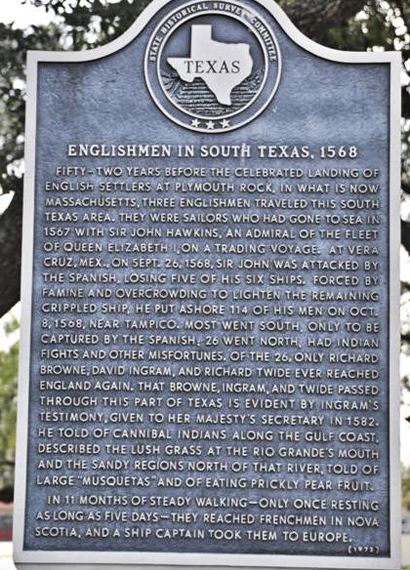| |
Historical
Marker TextEnglishmen
in South Texas, 1568Fifty-two
years before the celebrated landing of English settlers at Plymouth Rock, in what
is now Massachusetts, three Englishmen traveled this South Texas area. They were
sailors who had gone to sea in 1567 with Sir John Hawkins, an admiral of the fleet
of Queen Elizabeth I, on a trading voyage. At Vera Cruz, Mexico, on Sept 26, 1568,
Sir John was attacked by the Spanish, losing five of his six ships. Forced by
famine and overcrowding to lighten the remaining crippled ship, he put ashore
114 of his men on October 8, 1568, near Tampico. Most went south, only to be captured
by the Spanish; 26 went north, had indian fights and other misfortunes. Of the
26, only Richard Browne, David Ingram, and Richard Twide ever reached England
again. That Browne, Ingram, and Twide passed through this part of Texas is evident
by Ingram's testimony, given to her Majesty's secretary in 1582. He told of cannibal
Indians along the Gulf Coast. Described the lush grass at the Rio Grande's mouth
and the sandy regions north of that river, told of large "musquetas" and of eating
prickly pear fruit.
In 11 months of steady walking-- only once resting
as long as five days-- they reached Frenchmen in Nova Scotia, and a ship captain
took them to Europe.
(1973) |
 |
"Englishmen in South Texas, 1568" Historical Marker
Photo courtesy
Gerald Massey,
October 2010 | |
|